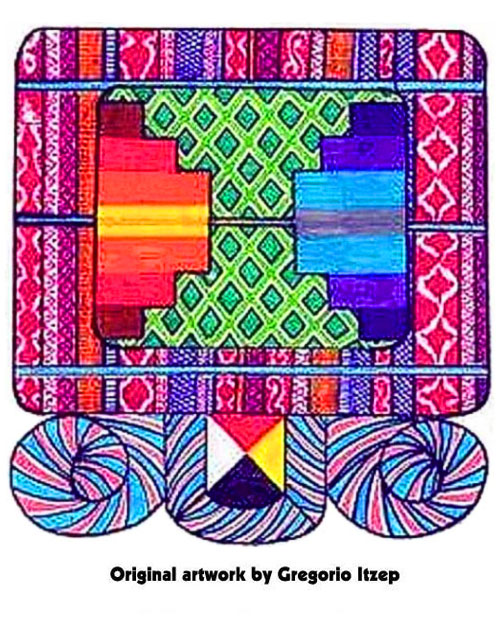
Etznab TRECENA
by Kenneth Johnson
Though many day-signs vary in their names and meanings throughout the wider world of Mesoamerica, Etznab is almost universally perceived as a knife of flint or of obsidian. The black volcanic stone obsidian was connected with the Aztec deity Tezcatlipoca, who is known in the Classic Maya period as Kauil and in the Pop Wuj as Tohil. His Aztec name means “Smoking Mirror,” and some have called him the dark god of human sacrifice. Others have called him a healer, a curandero or patron of curanderos.
Symbolically, the knife represented by the day-sign is not substantially different from the symbol of the sword in other spiritual traditions. The knife divides human consciousness into a duality of right and wrong, yes and no—hence Etznab was at one time associated with the number 2 in ancient Mayan numerology. The hieroglyph for Etznab is, in and of itself, suggestive of duality, and there are several polarities or dualities embodied within the symbolism of this day-sign. It is said that Etznab is one of several day-signs which embodies the basic polarity of woman and man, and though its most important medical correspondence is the teeth and the tongue, on an esoteric level it is symbolic of human sexual organs.
To lose our innate unity, our consciousness of wholeness, is to become aware of opposites—which is always painful. This consciousness of opposites is necessary—it is a sacrifice that we must make in order to attain a certain level of moral consciousness. Many spiritual traditions postulate an original unity that is lost when consciousness of duality, of right and wrong, emerges from the primordial womb of the unconscious. It is in this world of opposites that we act—opposites are a precondition for our actions in the world. Indeed, it is only when we have become aware of the duality of human existence that we are in fact awakened to the healing potential that lies within all of us. If the sword of consciousness that makes us aware of duality can wound us, it can also heal.
We all seek to re-establish that original unity, and, if we devote our lives to the hard work of “soul-making,” we may actually achieve this to some degree, though we will never return to the childlike unity of the womb. We have lived in the world of duality, we have sacrificed our state of childhood innocence, and if we achieve unity with the cosmos once again we shall do so on a different level entirely. We have grown up and have lived in the world of yes and no, the world of the sword that slashed our primordial womb in two. We may, like the Buddha, transcend suffering and sacrifice, but we will always remain conscious of the fact that it exists. This is the lesson of the day-sign of the Obsidian Knife.
Etznab is also a day-sign of both knowledge and misinformation. While the K’iche’ name of this day-sign, Tijax, reminds us of the word tij, implying a struggle, there are also associated words like tijoj, the verb meaning “to teach,” and tijobal, meaning a classroom or school. At its best, this sharp knife cuts through illusion and ignorance, honing the fine edge of our thoughts into true wisdom. In this respect, Etznab is indeed a sign of education and teaching. But true to the duality inherent within the sign, information also has its dark side. Etznab can all too easily become a sign of gossip, malicious talk, quarreling, and “disinformation” pure and simple.
Etznab is the warrior and the healer. It is our choice as human beings as to how we shall use its energy. It is not a matter of destiny; we have the freedom to walk towards the darkness or towards the light. Etznab has a special connection with the mineral world, and with stones. Certain healers use stones, especially quartz crystal, as instruments of seeing, or even medical diagnosis. In terms of the physical world around us, Etznab also has a special connection with caves and with lightning storms.
The world is full of potential road blocks and accidents. Upon this day, we pray for safety from all harm, and for the resolution of all conflict. This day has a special connection with healing and is favorable for health matters and the curing of disease, for the obsidian knife is capable of cutting away all evil, everything unhealthy. It is an auspicious day for all those involved in the healing professions. It is a day to resolve quarrels.
http://www.jaguarwisdom.org

